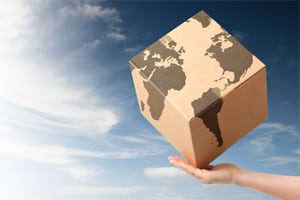 While presenting a number of risks and some significant barriers to entry, global ecommerce represents a massive opportunity and more retailers are jumping onboard as solutions for addressing cross-border business become more readily available. According to eMarketer, worldwide B2C ecommerce sales in 2015 are expected to rise 15.6% to $1.7 trillion.
While presenting a number of risks and some significant barriers to entry, global ecommerce represents a massive opportunity and more retailers are jumping onboard as solutions for addressing cross-border business become more readily available. According to eMarketer, worldwide B2C ecommerce sales in 2015 are expected to rise 15.6% to $1.7 trillion.
[Register NOW for Growing Global 2015]
Jamison Shelton, owner and principal of Global Nuance Consulting, said there’s been a “shift in perception” from the U.S. as the dominant market in the center of the ecommerce world. In fact, eMarketer has the Asia-Pacific region surpassing North America as the number-one B2C ecommerce market globally this year, with 33.4% vs. 31.7% of total sales.
“The biggest thing we’re seeing is more of an acceptance of retailers competing globally, and it’s becoming more the norm,” Shelton said. “For a long time, domestic retailers felt since this was their biggest market, nothing else made sense. But now they’re finding out when they look at traffic stats from their U.S. ecommerce site that people from all over world are coming there, even if they’re not actively marketing it. So now it’s become a matter of figuring out the best way to support those customers.”
[RELATED: Options for Addressing Global Ecommerce Barriers Increase]
The rise of cross-border specialists shows how hot global ecommerce is becoming, Shelton said. According to the results of MCM Outlook 2015, which was fielded between Feb. 17 and March 10, 2015 with 175 qualified respondents, 25.7% of merchants are using a third-party service provider to market to global consumers, and 11.6% are using a third-party international shipping service.
The fact that there has been a flurry of acquisition activity in the space – with Pitney Bowes to acquire Borderfree, UPS snapping up i-parcel and FedEx buying Bongo – is another indicator, he said.
“These companies are coming in with easy-button solutions to support international customers, showing there’s a real need in the industry,” he said. “U.S. retailers are already maxed out, doing everything they can to compete here. When you try to add on functionality to support international ecommerce, you can run up against a lack of resources. Some of these companies have been around for a while, but are now starting to take off because of the increased demand and activity.”
Carl Miller, founder and managing director of the Global Retail Insights Network (GRIN), said retailers need to consider the regional pain points of consumers when considering which markets to enter.
“Look at how AliExpress does better in Brazil than in North America,” he said, referring to Alibaba’s marketplace of mostly small Chinese merchants. “It’s because value is the biggest concern for those consumers. It’s one reason why for North American and European retailers there’s so much interest in Asia, because of an emerging middle class that is very brand aware. I like to think about ecommerce growth in these markets as being driven by a better understanding of what the local consumer requirements are, and how retailers are hitting that space at the right time.”
After the economic downturn in 2008, retailers went in one of two directions, according to Zia Daniell Wigder, research director of global ecommerce for Forrester: They either focused exclusively on their domestic business, or feared having all their eggs in one basket and diversified with international trade.
“That second option has started to accelerate as the recovery continues,” Wigder said. “It’s been a combination of that, along with the arrival of more streamlined market entry options such as marketplaces and service providers, making it easier to embrace cross border without requiring the same resources as a fully localized operation would.”



